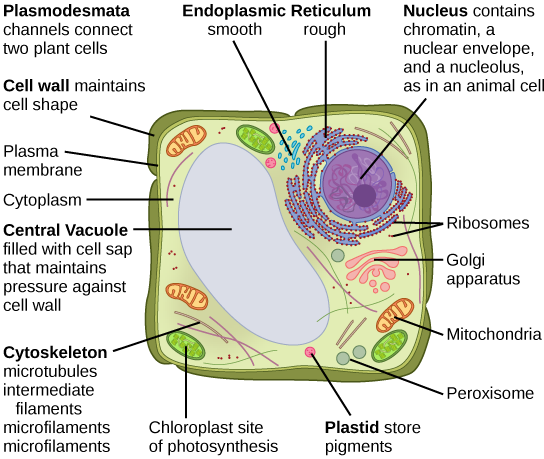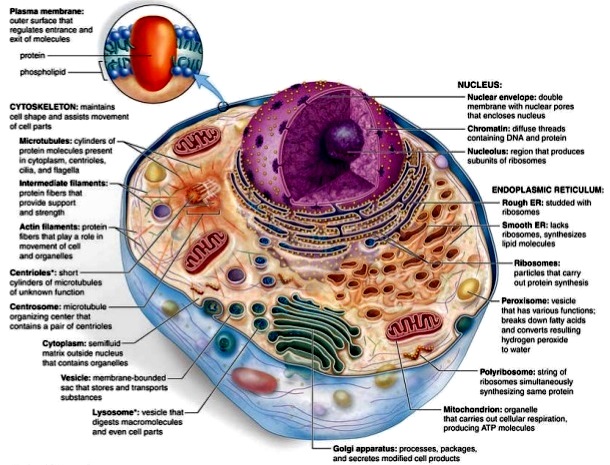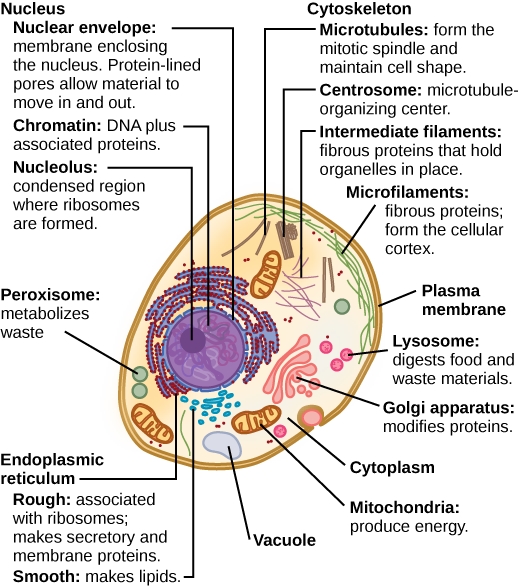Alright, now we’re gonna look at the little parts inside the cell, just like how you’d look at different tools in a tool shed. Cells got all kinds of parts, each doing its own job. So let’s start from what we see when we first look at it, going layer by layer.
1. Cell Wall

This part’s like the walls of a barn, sturdy and keeping the whole cell safe and in shape. Plants and some other cells got it thick, while animal cells don’t have it as strong. The cell wall keeps the shape together, and it’s made out of tough stuff, like cellulose in plants, which helps them stand strong.
2. Cell Membrane
Now right inside the cell wall is the cell membrane. This one’s thin and a bit like the skin on an onion. It’s flexible and lets stuff in and out – like a doorman, it’s choosy, only letting the right things pass through. Oxygen, water, nutrients, they all got to go through this to get inside, but bad stuff gets blocked out.
3. Cytoplasm
Inside that cell membrane, we got the cytoplasm. It’s like the jelly in a pie, filling up the whole cell so everything stays put. In this gooey stuff, you’ll find the cell’s “tools” floating around, like little organelles (fancy word for the cell’s “organs”). It’s full of proteins, salts, and other bits that keep the cell going strong.
4. Nucleus

The nucleus, now that’s the big boss in the middle. It’s got all the plans, kinda like the head of the household in the cell. Inside the nucleus is DNA, which has all the instructions for how the cell grows, works, and even divides to make new cells. It’s all packed in there safe.
5. Vacuole
Now, some cells, especially in plants, have these big water bags called vacuoles. These keep water stored, just like a rain barrel. When the plant’s thirsty, it pulls water from here. It also keeps nutrients and waste, so the cell doesn’t get messy. In animal cells, they’re smaller, but they’re still there, keeping things tidy.
6. Chloroplast
This here’s a special part only in plant cells and a few others. The chloroplast is where sunlight gets turned into energy, like how plants make their food. Inside the chloroplast is chlorophyll – that green stuff – that grabs sunlight and makes sugar for the plant to eat. It’s like a tiny kitchen inside the cell!
7. Golgi Apparatus

Now the Golgi apparatus might sound fancy, but all it does is pack things up and send them off where they’re needed. You can think of it like a post office – proteins come here, get wrapped up and sent out to other parts of the cell. It’s handy for keeping everything organized.
8. Endoplasmic Reticulum (ER)
There’s also the endoplasmic reticulum, or ER for short, which is like a transport system. Rough ER is covered in ribosomes (we’ll talk about these next), and it makes and moves proteins. Smooth ER doesn’t have those ribosomes, and it’s all about making fats and oils, which the cell needs too.
9. Ribosomes
Ribosomes are tiny but mighty. They’re like little kitchens that whip up proteins, which the cell uses to grow and repair. These are found all over, especially on the rough ER, making it busy with protein production.
10. Mitochondria

Then we got the mitochondria – the cell’s powerhouses. They take sugar and oxygen and turn it into energy. Think of it like a little generator inside, keeping the cell running. Without mitochondria, the cell would run out of juice real quick!
So there you go, a little peek inside the cell! Each piece got a job, just like folks on a farm, all working together to keep things moving.
Tags:[Cell Structure, Organelles, Cell Biology, Plant Cell, Animal Cell]